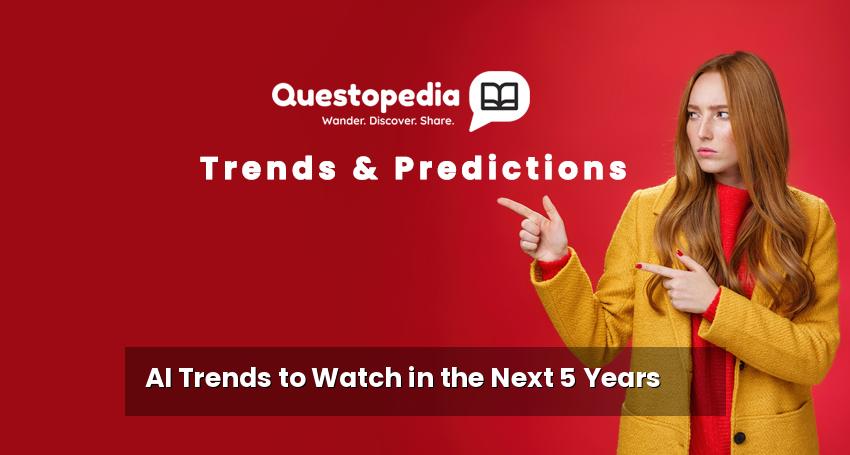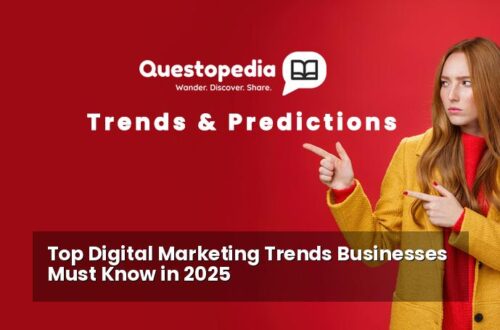AI Trends to Watch in the Next 5 Years
Artificial intelligence (AI) is no longer a futuristic concept; it’s actively shaping our present and rapidly evolving. From self-driving cars to personalized medicine, AI’s influence is becoming increasingly pervasive. Understanding the key AI trends that will dominate the next five years is crucial for businesses, researchers, and individuals alike. This article explores the most significant advancements and their potential impact, helping you stay ahead in this dynamic landscape.
1. The Rise of Generative AI and Its Creative Power
Generative AI, including models like GPT-4 and DALL-E 2, is set to revolutionize content creation. These models can generate text, images, videos, and even code based on simple prompts. Over the next five years, we can expect to see:
A. Enhanced Creative Applications
Generative AI will empower artists, writers, and musicians to create original works more efficiently. Imagine personalized advertising campaigns tailored to individual preferences, or AI-composed soundtracks for video games. This trend will require us to rethink traditional definitions of authorship and creativity.
B. Increased Automation of Content Creation
Businesses will leverage generative AI to automate tasks like drafting marketing copy, creating social media content, and even designing websites. This will lead to significant cost savings and increased efficiency, but also raises concerns about job displacement.
C. The Ethical Considerations of Generative AI
As generative AI becomes more sophisticated, issues related to copyright infringement, misinformation, and deepfakes will become more pressing. Developing ethical guidelines and regulations will be crucial to ensure responsible use of this powerful technology. For more insights on AI ethics, explore Questopedia‘s section on responsible AI.
2. AI-Powered Automation: Beyond Repetitive Tasks
While automation is already impacting various industries, the next five years will witness a shift towards more sophisticated and AI-powered automation. This includes:
A. Intelligent Process Automation (IPA)
IPA combines robotic process automation (RPA) with AI technologies like machine learning and natural language processing to automate complex, end-to-end business processes. This goes beyond simply automating repetitive tasks to handling unstructured data, making decisions, and adapting to changing circumstances.
B. Edge Computing and Real-Time Automation
Combining AI with edge computing, processing data closer to the source (e.g., in factories or autonomous vehicles), allows for real-time decision-making and automation. This is critical for applications like predictive maintenance, autonomous driving, and smart manufacturing.
C. AI in Supply Chain Management
AI will play a crucial role in optimizing supply chains, predicting demand, managing inventory, and mitigating risks. This will lead to more resilient and efficient supply chains, enabling businesses to respond quickly to disruptions.
3. The Personalization Revolution: AI-Driven Experiences
AI is already enabling personalized experiences in areas like e-commerce and healthcare. In the next five years, we can expect:
A. Hyper-Personalized Marketing
AI will analyze vast amounts of data to understand individual customer preferences and behaviors, allowing businesses to deliver hyper-personalized marketing messages and product recommendations. This will result in increased customer engagement and loyalty.
B. AI-Powered Healthcare
AI will be used to personalize treatment plans, predict patient outcomes, and develop new drugs. AI-powered diagnostics will improve accuracy and speed, while virtual assistants will provide personalized health advice and support.
C. Personalized Education
AI will tailor learning experiences to individual student needs, providing personalized feedback and adapting to different learning styles. This will lead to improved student outcomes and a more engaging educational experience.
4. The Convergence of AI and the Internet of Things (IoT)
The combination of AI and the Internet of Things (IoT) is creating a powerful synergy. Over the next five years, we’ll see:
A. Smart Cities
AI-powered IoT devices will be used to optimize traffic flow, manage energy consumption, improve public safety, and provide other essential services in smart cities. This will lead to more sustainable and livable urban environments.
B. Industrial IoT (IIoT)
AI will be used to analyze data from sensors in factories and other industrial settings, enabling predictive maintenance, optimizing production processes, and improving worker safety. This will lead to increased efficiency and reduced costs.
C. Connected Healthcare
IoT devices, such as wearable sensors and remote monitoring systems, will collect real-time health data, which AI will then analyze to provide personalized health insights and support. This will enable more proactive and preventative healthcare.
5. Advancements in AI Hardware and Infrastructure
The increasing demands of AI applications are driving innovation in AI hardware and infrastructure. Key trends include:
A. Specialized AI Chips
Companies are developing specialized AI chips, such as GPUs and TPUs, that are optimized for AI workloads. These chips offer significantly better performance and energy efficiency than general-purpose processors.
B. Quantum Computing
While still in its early stages, quantum computing has the potential to revolutionize AI by enabling the training of more complex models and solving problems that are currently intractable. See more about quantum computing on Questopedia.
C. Cloud-Based AI Platforms
Cloud providers are offering increasingly sophisticated AI platforms that provide access to pre-trained models, development tools, and scalable infrastructure. This makes it easier for businesses of all sizes to leverage AI.
Conclusion
The next five years promise to be a period of rapid advancement and widespread adoption of AI. Understanding these key AI trends – generative AI, AI-powered automation, personalized experiences, the convergence of AI and IoT, and advancements in AI hardware – is essential for navigating this transformative landscape. Staying informed and adaptable will be crucial for businesses and individuals alike to harness the power of AI and thrive in the years to come. Don’t forget to check back with Questopedia for more updates and insights on the ever-evolving world of AI.






